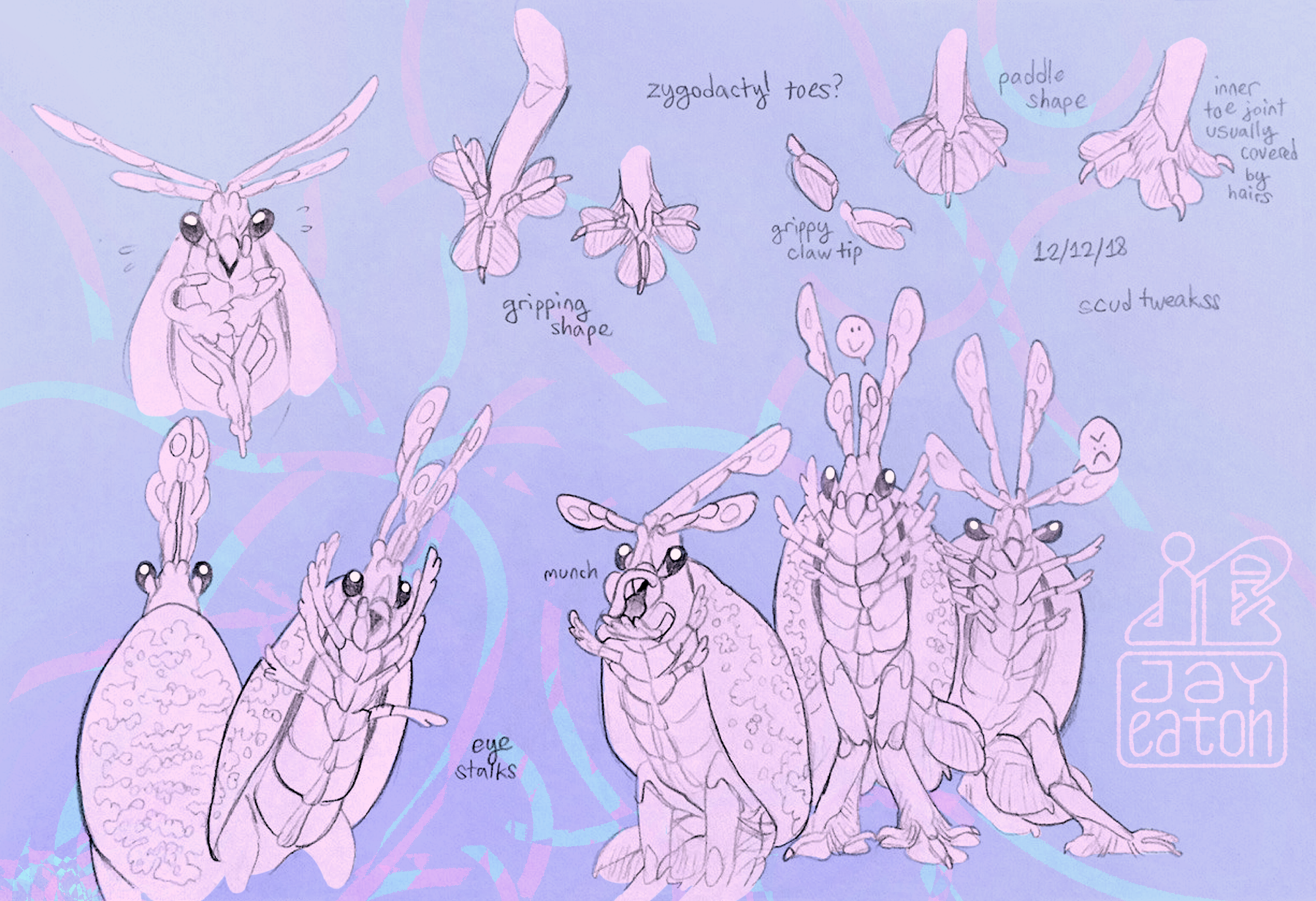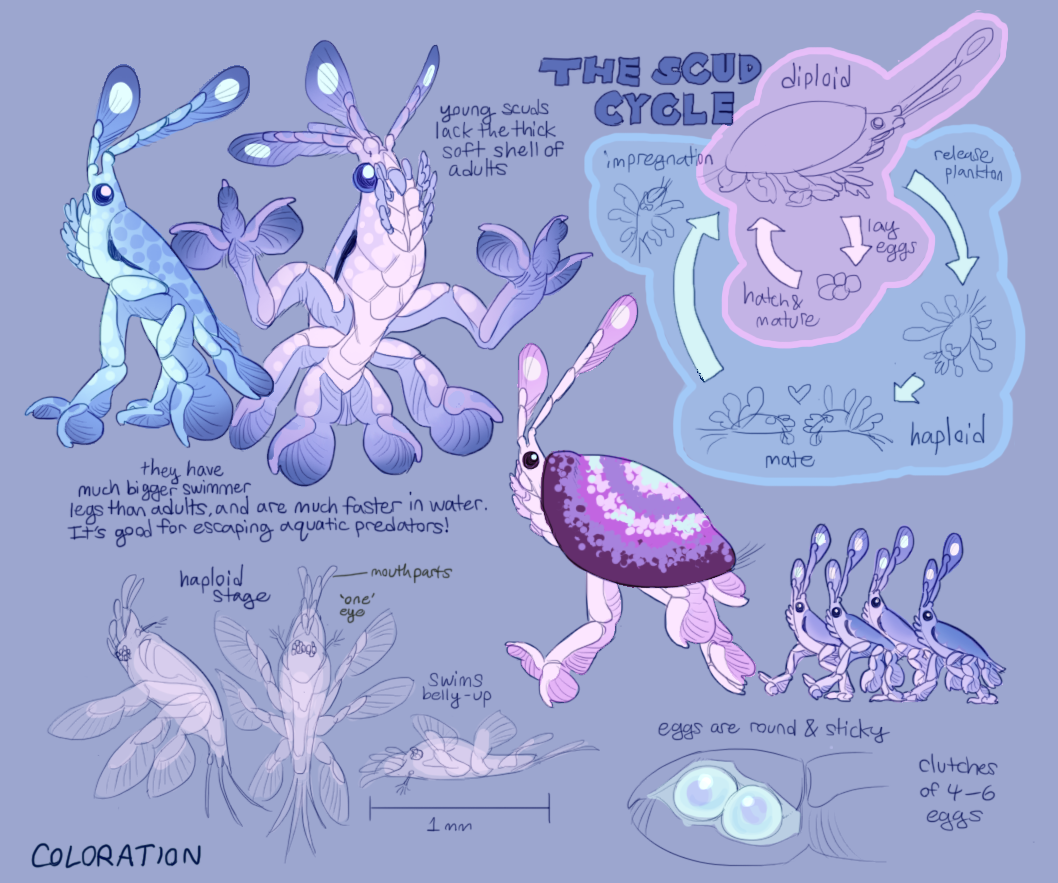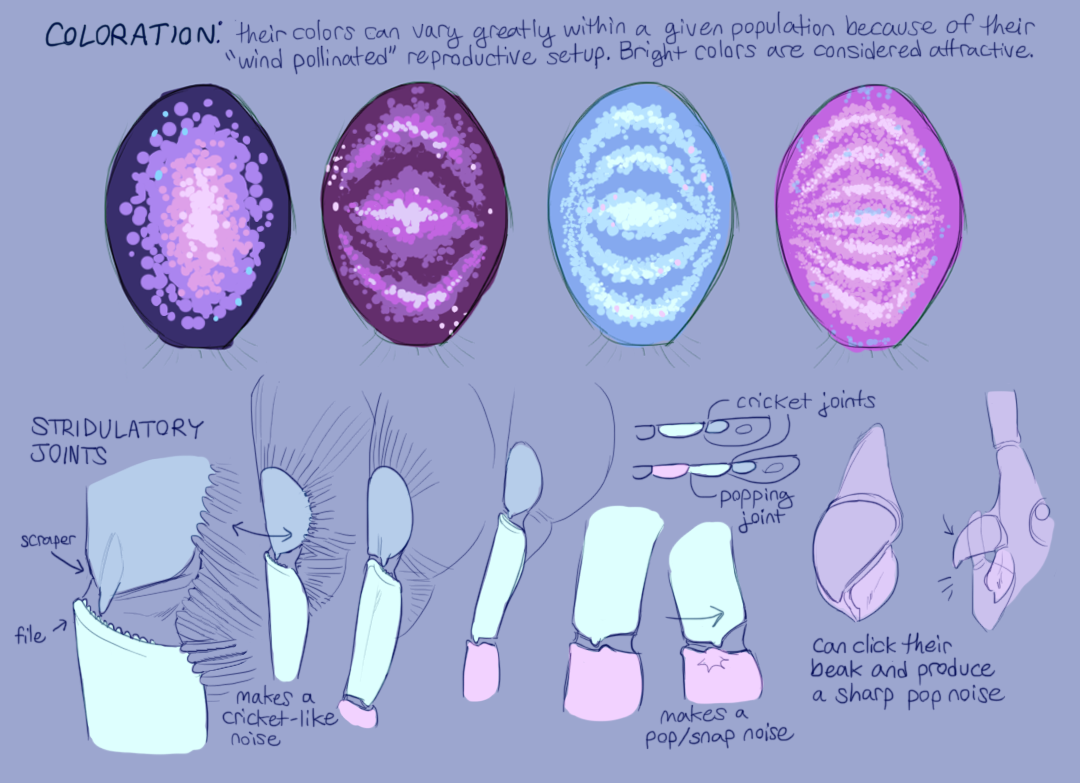

Scuds are sapient amphibious creatures who live in saltwater intertidal zones. They can breathe fine out of water as long as they keep their gills wet, but are most comfortable submerged in the ocean.

Scuds are technically a bisex species, but reproductively speaking are more like ferns than any earth animal. They have two different forms, haploid and diploid. The diploid stage is sapient, about 2.5 feet tall, and egg laying. The haploid stage is a microscopic plankton with two sexes. Diploid scuds release haploid scuds in a sort of bi-monthly “period,” which then float around gathering nutrients in the ocean before mating with another haploid and trying to find a diploid scud to impregnate before they die. From the perspective of diploid scuds, they are essentially wind pollinated. Because of this system, genetic inheritance is almost entirely determined by local currents. Most of the plankton in their planet’s ocean is made up of similar haploid stages of bigger sea creatures, sort of like how some of our plankton eventually turns into big ol’ crabs and stuff.
Diploid scuds usually live together in large family groups, where the elder scuds help take care of their offsprings' children. Scud eggs usually come in clutches of 4-6 soft eggs that they stick to their 4 rear swimmer legs with a natural adhesive.

Scud language is a mixture of sound and visuals. They create noise through stridulation, mostly clicking their bill and rubbing the joints in their antenna together. While speaking they will also wave their antenna like little semaphore flags, which depending on the specific language can indicate anything from tone to verb tense.